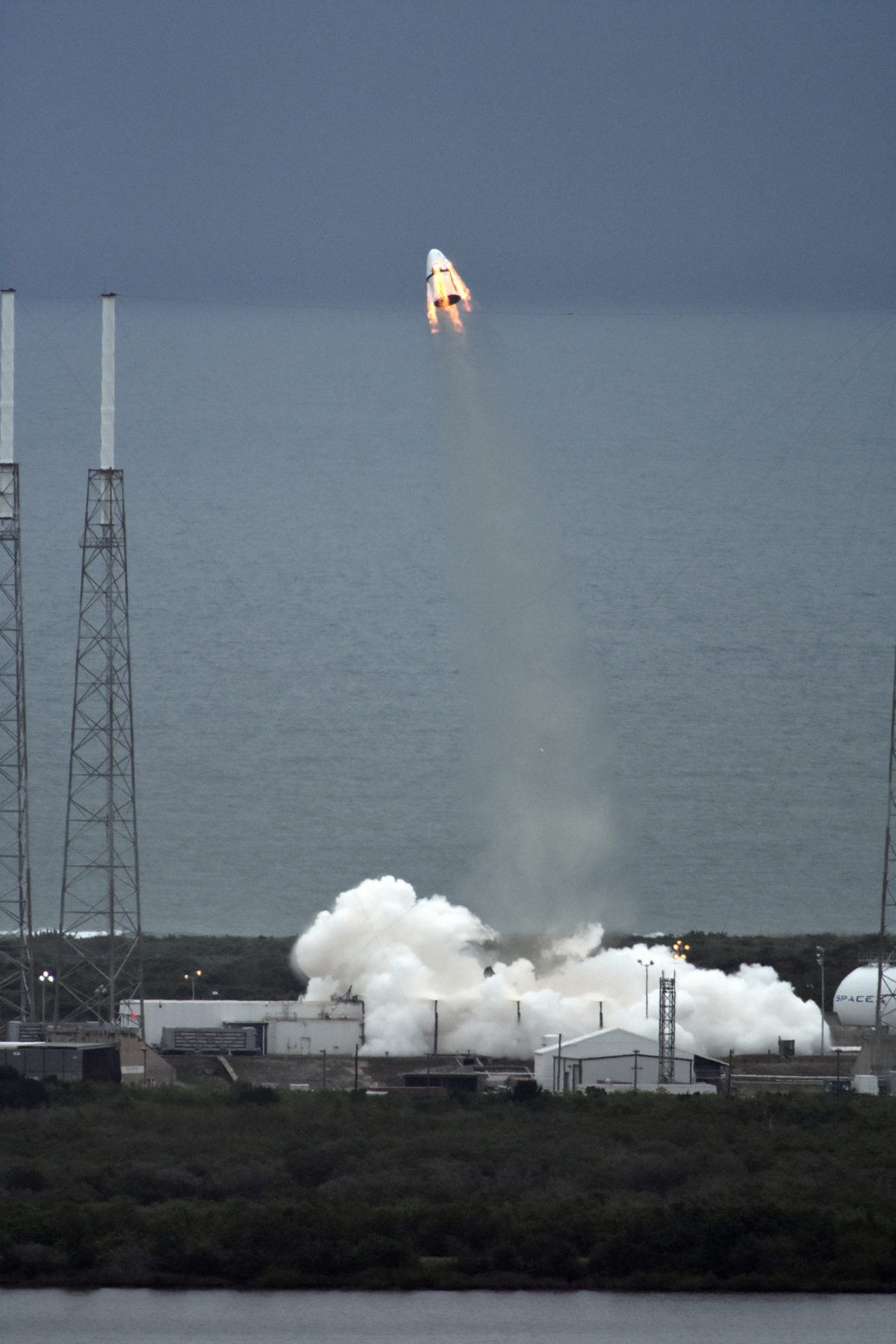Crew Dragon Test Vehicle Suffers Mishap during Engine Testing

Written by
Jason Davis
April 20, 2019
A SpaceX Crew Dragon test vehicle suffered a mishap during engine testing today at Cape Canaveral, Florida, the company says. The extent of the accident is unclear, but Florida Today has posted a picture of the test area showing a plume of orange smoke visible from miles away. No injuries have been reported.
News brief
The accident happened at Landing Zone 1, where a Falcon Heavy booster landed after the rocket's successful flight on 11 April. SpaceX was using the site to prepare for a crucial in-flight abort test, required to demonstrate the spacecraft can safely propel astronauts away from a failing Falcon 9 rocket.
It was unclear which Crew Dragon was involved in the accident, but SpaceX officials previously said the abort test would use the vehicle that successfully made an uncrewed test flight to the International Space Station in March.
The company issued the following statement to media:
Earlier today, SpaceX conducted a series of engine tests on a Crew Dragon test vehicle on our test stand at Landing Zone 1 in Cape Canaveral, Florida. The initial tests completed successfully but the final test resulted in an anomaly on the test stand.
Ensuring that our systems meet rigorous safety standards and detecting anomalies like this prior to flight are the main reasons why we test. Our teams are investigating and working closely with our NASA partners.
The orange smoke could indicate the mishap was related to the hypergolic propellant used for Crew Dragon's abort engines. Crew Dragon is equipped with 8 SuperDraco engines, arranged in 4 sets of 2, that are used for launch abort, including a late-stage orbital insertion if necessary.
The mishap is likely to delay the first crewed test flight of Dragon, which was previously scheduled to occur later this year. A significant delay of that mission could also have repercussions for crew rotations aboard the International Space Station.

Support our core enterprises
Your gift today will go far to help us close out the year strong and keep up our momentum in 2026.
Donate

 Explore Worlds
Explore Worlds Find Life
Find Life Defend Earth
Defend Earth

